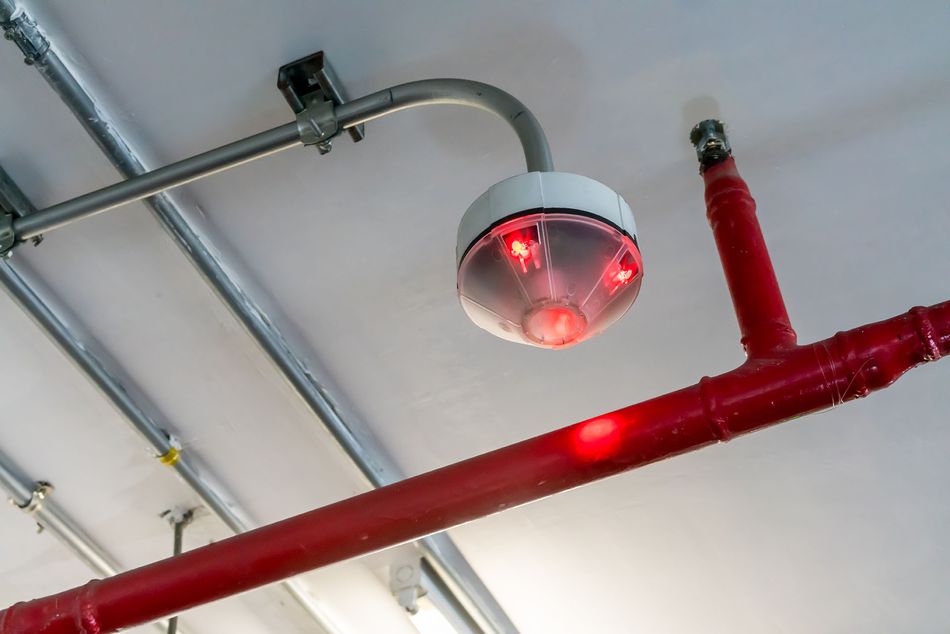The Beginner's Cheat Sheet to Wireless Communication Protocols
Wi-Fi®, 4G, LoRa®, and Matter - explained through example use cases and Arduino recommendations!

Arduino’s diverse hardware ecosystem gives you the flexibility to build with Wi-Fi®, 4G, LoRa®, or Matter – and manage it all through Arduino Cloud.
Choosing the most appropriate wireless communication protocol to connect our devices is a critical step in any IoT project – and one that must not be underestimated, as different technologies offer trade-offs in range, power consumption, bandwidth, and interoperability.
Read on to learn about the differences between Wi-Fi®, 4G LTE, LoRa®, Narrow Band IoT (NBIoT) / Cat-M1, and Matter, with real-world use cases that clearly demonstrate how there is no “one way” to connect, but instead many options to know about and carefully consider.
The good news is, Arduino offers a diverse ecosystem of hardware designed to work across all major protocols, empowering developers to connect devices in homes, cities, farms, and factories alike. On top of that, Arduino Cloud unlocks easy visualization and management with any build, regardless of the protocol you choose.
1. Wi-Fi®: High-Bandwidth Connectivity for Networked Environments
Use Case: Real-Time Air Quality Monitoring in Schools
Imagine deploying a network of air quality sensors across classrooms in a school. These sensors track temperature, humidity, and CO₂ levels in real time, helping staff optimize ventilation and student well-being. The school already has a stable Wi-Fi® network, so the solution must support high-frequency data transmission, cloud logging, and potentially a dashboard interface for visualization.
Why Wi-Fi® works
Wi-Fi® provides the necessary bandwidth and low-latency to stream sensor data, update dashboards, and trigger alerts when thresholds are breached.
Recommended products
Arduino UNO R4 WiFi – excellent for prototyping with built-in Wi-Fi® and CAN.
Arduino Nano ESP32 – compact, low-cost board with dual-core Wi-Fi® and Bluetooth.
Arduino Portenta H7 – best-in-class microcontroller compatible with industrial carrier boards.
Arduino Opta – the small but powerful smart I/O micro PLC.
Documentation:
UNO R4 WiFi Cheat Sheet https://docs.arduino.cc/tutorials/uno-r4-wifi/cheat-sheet/
Nano ESP32 Quickstart https://docs.arduino.cc/tutorials/nano-esp32/getting-started-nano-esp32/
Portenta H7 https://docs.arduino.cc/tutorials/portenta-h7/setting-up-portenta/

2. 4G LTE: Reliable Connectivity Anywhere
Use Case: Livestock Tracking in Rural Areas
In agriculture, livestock fitted with GPS tags can be tracked to prevent loss, monitor activity, or detect anomalies in behavior. But in remote areas, Wi-Fi® and Ethernet are not available. The devices must be mobile, low-maintenance, and connected via cellular networks.
Why 4G works
With wide coverage and mobility, 4G enables tracking and data upload from the field to the cloud, even while moving. You can monitor dozens of animals and trigger alerts if one leaves a geofenced area.
Recommended products
Arduino Pro 4G Module – compatible with the Arduino Portenta platform, offering global cellular and GNSS support.
Documentation:
Arduino Pro 4G Modem https://docs.arduino.cc/hardware/pro-4g-module/
Datasheet https://docs.arduino.cc/resources/datasheets/TPX00200-TPX00201-datasheet.pdf
Cellular with Portenta + Mid Carrier https://docs.arduino.cc/tutorials/portenta-mid-carrier/user-manual/
Portenta Proto Kit VE https://docs.arduino.cc/hardware/portenta-proto-kit-ve/
2.1 NB-IoT & LTE Cat-M1: Low-Power Cellular for Massive IoT
Use Case: Smart Utility Meters in Urban Infrastructure
Utility providers need to collect consumption data from thousands of smart meters installed in apartment basements and industrial sites. These meters send small data packets once or twice a day, and must last for years on battery power. With no Wi-Fi® coverage and no power supply at many locations, a low-energy, long-range cellular solution is essential.
Why NB-IoT and Cat-M1 work
NB-IoT and LTE Cat-M1 are optimized for low-bandwidth, infrequent communication, and offer exceptional energy efficiency. NB-IoT excels in deep indoor coverage, while Cat-M1 supports mobility and voice transmission when needed. Both are ideal for smart city deployments and industrial sensor networks that require scale, reliability, and low maintenance.
Recommended products
Portenta CAT.M1/NB IoT GNSS Shield – designed to add Cat-M1, NB-IoT, and GNSS functionality to Portenta boards. It supports ultra-low power operation and precise location tracking, making it ideal for industrial IoT applications. Pairing the shield with a Portenta H7, provides a rock-solid product.
Documentation:
Portenta CAT.M1/NB IoT GNSS Shield Overview https://docs.arduino.cc/hardware/portenta-cat-m1-nb-iot-gnss-shield/
Getting Started with Portenta CAT.M1/NB IoT GNSS https://docs.arduino.cc/tutorials/portenta-cat-m1-nb-iot-gnss-shield/getting-started/
3. LoRa®: Low Power, Long Range
Use Case: Soil Moisture Sensing Across a Vineyard
A vineyard installs dozens of soil sensors to monitor water content across different plots. These sensors are battery-powered and need to operate for months without maintenance, sending periodic data to optimize irrigation. There is no Wi-Fi® coverage in the field, but there is a LoRa® gateway a few kilometers away, at the farmhouse.
Why LoRa® works
LoRa® allows you to transmit small packets over kilometers with minimal power. Its asynchronous, event-based communication model is perfect for low-frequency updates like soil status or other small telemetry data.
Recommended products
Arduino MKR WAN 1310 – optimized for low power and easy to integrate with LoRaWAN® networks like The Things Network.
Documentation:
Connect to The Things Network https://docs.arduino.cc/tutorials/mkr-wan-1310/the-things-network/
LoRaWAN® farming with Arduino Edge Control and MKR WAN 1310 https://docs.arduino.cc/tutorials/edge-control/smart-irrigation-system-v2/
4. Matter: Interoperability for the Smart Home
Use Case: Energy-Efficient Smart Plug Compatible with Alexa and Apple Home
A hardware startup is developing a smart plug that allows users to monitor and control appliances via voice assistants. It must be cross-platform and secure, working natively with Apple HomeKit, Google Home, and Amazon Alexa without requiring a custom app.
Why Matter works
Matter is built for interoperability, enabling seamless integration with major smart home ecosystems. It also supports local control, making devices more responsive and private by reducing cloud dependency.
Recommended products
Arduino Nano Matter – a compact board with Thread and Bluetooth® Low Energy support, designed for battery-powered Matter-certified devices.
Documentation:
Nano Matter User Manual https://docs.arduino.cc/tutorials/nano-matter/user-manual/
Build a Matter Fan https://docs.arduino.cc/tutorials/nano-matter/matter-fan/
Unified Management with Arduino Cloud
No matter the protocol, most boards can be connected to Arduino Cloud for seamless remote management, dashboard creation, and OTA (over-the-air) updates. Developers can:
Visualize data from Wi-Fi® or LoRa® sensors
Send commands to devices connected via Wi-Fi® or 4G (Command and Control)
Integrate with Alexa and other platforms
Automate alerts
Leverage Arduino Cloud’s AI Assistant to code faster
Arduino Cloud provides the infrastructure to scale from a single sensor to an entire connected system – all through a consistent and developer-friendly interface.
Connect the Right Way
Every wireless protocol has its place. The best results come from choosing the one that matches your needs – from low-power field sensors to high-speed streaming, from interoperable smart homes to remote farms.
Arduino’s diverse hardware ecosystem gives you the flexibility to build with Wi-Fi®, 4G, LoRa®, or Matter – and manage it all through Arduino Cloud.